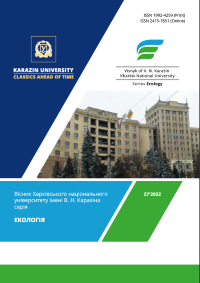Оцінка перспективи створення нових лісів у Тернопільській області
Анотація
Для оптимізації процесу збільшення лісовкритих земель потрібно додатково залучити до залісення непридатні для сільськогосподарського виробництва землі та передати самозалісені землі лісогосподарським підприємствам. Проте однією із перепон передачі земель в користування лісогосподарським підприємствам є небажання втрачати цінні активи у вигляді земель, та туманна перспектива отримання дивідендів. Також варто згадати і проблему колгоспних лісів, котрі на даний момент не надані в користування лісогосподарським підприємствам області та в межах котрих не проводиться, ні охорона, ні використання лісових ресурсів. Основною проблемою для таких лісів виступає їхня передача в постійне користування державним або комунальним лісогосподарським, чи комунальним підприємствам зі створеними спеціалізованими лісогосподарськими підрозділами. Отже оптимальним виходом з такої ситуації можна вважати створення комунальних лісогосподарських підприємств з територіальними громадами області, котрі мали б можливість на такій базі поступово створювати нові ліси.
##submission.downloads##
Опубліковано
Номер
Розділ
Ліцензія
Авторське право (c) 2022 Царик Л. П., Смеречинський Ю. В.

Ця робота ліцензується відповідно до Creative Commons Attribution 4.0 International License.
Автори, які публікуються у цьому журналі, погоджуються з наступними умовами:
- Автори залишають за собою право на авторство своєї роботи та передають журналу право першої публікації цієї роботи на умовах ліцензії Creative Commons Attribution License 4.0 International (CC BY 4.0), котра дозволяє іншим особам вільно розповсюджувати опубліковану роботу з обов'язковим посиланням на авторів оригінальної роботи та першу публікацію роботи у цьому журналі.
- Автори мають право укладати самостійні додаткові угоди щодо неексклюзивного розповсюдження роботи у тому вигляді, в якому вона була опублікована цим журналом (наприклад, розміщувати роботу в електронному сховищі установи або публікувати у складі монографії), за умови збереження посилання на першу публікацію роботи у цьому журналі.
- Політика журналу дозволяє і заохочує розміщення авторами в мережі Інтернет (наприклад, у сховищах установ або на особистих веб-сайтах) рукопису роботи, як до подання цього рукопису до редакції, так і під час його редакційного опрацювання, оскільки це сприяє виникненню продуктивної наукової дискусії та позитивно позначається на оперативності та динаміці цитування опублікованої роботи (див. The Effect of Open Access).

